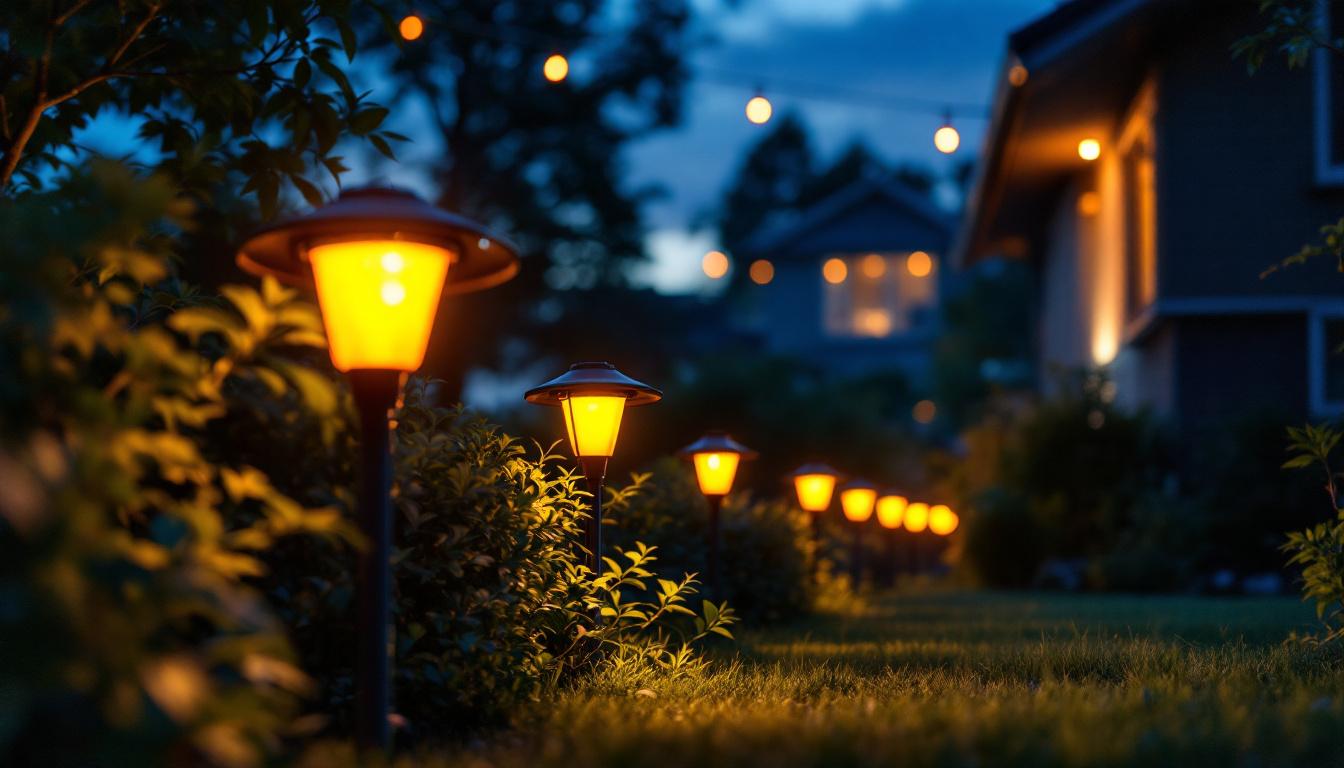
Lighting contractors play a crucial role in the construction and renovation of spaces, ensuring that every project is illuminated to perfection. Whether working on residential, commercial, or industrial projects, having a comprehensive checklist can streamline the process and enhance efficiency. This article presents a detailed checklist tailored for lighting contractors, covering essential aspects from planning to installation and maintenance.
Before embarking on any lighting project, it’s essential to have a thorough understanding of the client’s needs. This involves discussing the purpose of the space, desired ambiance, and specific lighting requirements. Engaging in detailed conversations can help uncover preferences regarding style, brightness, and energy efficiency.
Additionally, gathering information about the architectural design and existing electrical systems will provide valuable context for the project. This step ensures that the lighting solutions proposed align with the client’s vision and practical constraints. It’s also beneficial to explore the client’s previous experiences with lighting, as this can offer insights into their likes and dislikes, ultimately guiding the design process more effectively.
Furthermore, understanding the client’s target audience or user base can significantly influence the lighting design. For instance, a restaurant may require softer, warmer lighting to create an inviting atmosphere, while a retail space might benefit from brighter, more focused lighting to highlight products. By delving deeper into these aspects, contractors can create a more personalized and impactful lighting experience.
A comprehensive site assessment is vital for identifying potential challenges and opportunities. During this phase, contractors should evaluate the physical space, noting dimensions, existing fixtures, and natural light sources. It’s also important to consider the layout and how it may influence lighting placement.
Taking photographs and making detailed notes can be beneficial for reference during the design phase. Understanding the site’s unique characteristics will enable contractors to propose tailored lighting solutions that enhance the overall aesthetic and functionality. Additionally, assessing the electrical infrastructure is crucial; this includes checking the capacity of circuits and the condition of wiring to ensure that the new lighting can be safely integrated.
Moreover, considering the environmental factors surrounding the site can also play a significant role in the assessment. For example, if the space is located in an area with high levels of natural light, contractors might explore options for dimmable fixtures or smart lighting systems that adjust according to the time of day. This not only enhances the user experience but can also contribute to energy savings and sustainability goals.
Establishing a clear budget is a critical component of the planning process. Contractors should work closely with clients to determine how much they are willing to invest in the lighting project. This budget should encompass not only the cost of fixtures but also installation, maintenance, and potential upgrades.
By discussing budget constraints upfront, contractors can propose realistic solutions that meet the client’s expectations without compromising quality. It’s also wise to include a contingency fund for unexpected expenses that may arise during the project. Additionally, exploring various lighting technologies can help in making cost-effective decisions; for instance, LED fixtures may have a higher initial cost but offer significant savings in energy consumption and longevity over time.
Furthermore, it may be beneficial to present clients with a range of options at different price points, allowing them to make informed decisions based on their financial comfort. This transparency not only builds trust but also empowers clients to prioritize certain aspects of the project, whether it be the quality of fixtures or advanced control systems, ensuring that their investment aligns with their overall vision for the space.
Effective lighting design is rooted in several key principles, including functionality, aesthetics, and energy efficiency. Contractors should consider the three primary types of lighting: ambient, task, and accent. Each type serves a distinct purpose and contributes to the overall atmosphere of the space.
Ambient lighting provides general illumination, task lighting focuses on specific areas for activities, and accent lighting highlights architectural features or artwork. A well-balanced combination of these lighting types can create a harmonious environment that meets the client’s needs.
Choosing the right fixtures is crucial for achieving the desired lighting effect. Contractors should consider factors such as style, size, and energy efficiency when selecting fixtures. LED options are increasingly popular due to their longevity and reduced energy consumption, making them an excellent choice for both residential and commercial projects.
Additionally, the color temperature of the fixtures should align with the intended mood of the space. Warmer tones can create a cozy atmosphere, while cooler tones may be more suitable for workspaces. Providing clients with samples or mock-ups can help them visualize the final outcome.
Staying compliant with local building codes and regulations is paramount for any lighting project. Contractors should familiarize themselves with the relevant standards regarding electrical safety, energy efficiency, and environmental impact. This knowledge not only ensures legal compliance but also enhances the overall quality of the installation.
Consulting with local authorities or industry associations can provide valuable insights into the latest regulations and best practices. Keeping abreast of these requirements will help contractors avoid costly delays and potential legal issues.
Before installation begins, it is essential to prepare the site adequately. This includes ensuring that all necessary tools and materials are on hand, as well as confirming that the electrical systems are ready for the new fixtures. Safety should always be the top priority; contractors should implement appropriate safety measures to protect themselves and others on-site.
Using personal protective equipment (PPE) and adhering to safety protocols can help prevent accidents and injuries. Additionally, contractors should ensure that the work area is clear of obstacles and hazards, creating a safe environment for installation.
The installation process can vary significantly depending on the type of fixtures being installed. For recessed lighting, precise measurements and careful cutting are essential to ensure a seamless fit. Surface-mounted fixtures may require different mounting techniques, and contractors should be familiar with the specific requirements for each type.
Wiring is another critical aspect of the installation process. Contractors should follow best practices for electrical connections, ensuring that all wiring is secure and compliant with local codes. Proper labeling of circuits can also facilitate future maintenance and troubleshooting.
Once the installation is complete, conducting thorough quality control checks is vital. This includes testing each fixture to ensure it operates correctly and meets the client’s specifications. Any issues should be addressed promptly to avoid delays in project completion.
Additionally, contractors should verify that the lighting design achieves the desired effect. This may involve making adjustments to fixture placement or brightness levels. Engaging the client during this phase can help ensure satisfaction with the final result.
After the installation is complete, providing clients with training on how to operate and maintain their new lighting system is essential. This includes demonstrating how to use any smart controls or dimmers, as well as explaining maintenance requirements.
Providing a comprehensive handover package that includes warranty information, maintenance tips, and contact details for future support can enhance the client experience. This proactive approach can lead to positive referrals and repeat business.
Lighting systems require ongoing maintenance to ensure optimal performance and longevity. Contractors should offer maintenance packages or support services to assist clients with any issues that may arise after installation. Regular check-ups can help identify potential problems before they escalate, saving clients time and money in the long run.
Additionally, educating clients about the importance of regular maintenance can foster a sense of responsibility and ownership over their lighting systems. This can lead to a more satisfied client base and a stronger reputation for the contractor.
Gathering feedback from clients after project completion is invaluable for continuous improvement. Contractors should encourage clients to share their experiences, both positive and negative. This feedback can provide insights into areas for enhancement and help identify trends in client preferences.
Implementing changes based on client feedback can lead to improved service offerings and a more refined approach to future projects. This commitment to growth and adaptation can set a contractor apart in a competitive market.
Having the right tools is essential for any lighting contractor. Basic tools include screwdrivers, pliers, wire strippers, and voltage testers. Additionally, specialized tools such as laser levels and circuit testers can enhance accuracy and efficiency during installation.
Investing in quality tools not only improves the quality of work but also reduces the likelihood of accidents or errors. Regular maintenance of tools is also important to ensure they remain in good working condition and provide reliable performance.
In today’s digital age, leveraging technology can significantly enhance a contractor’s workflow. Project management software can help streamline communication, scheduling, and budgeting, making it easier to manage multiple projects simultaneously.
Design software can also be beneficial for visualizing lighting layouts and generating proposals for clients. These tools can improve efficiency and professionalism, ultimately leading to better client satisfaction.
Joining industry associations can provide valuable networking opportunities and access to resources that can enhance a contractor’s knowledge and skills. Many associations offer training programs, workshops, and certifications that can keep contractors updated on the latest trends and technologies in lighting.
Continuous education is vital in an ever-evolving industry. Staying informed about new products, techniques, and regulations can help contractors maintain a competitive edge and provide the best possible service to their clients.
A comprehensive checklist is an invaluable tool for lighting contractors, guiding them through each phase of a project from planning to post-installation support. By focusing on client needs, adhering to design principles, ensuring safety during installation, and offering ongoing maintenance, contractors can deliver exceptional results that exceed client expectations.
Incorporating the right tools, software, and industry knowledge can further enhance the efficiency and quality of work. By committing to continuous improvement and client satisfaction, lighting contractors can build a strong reputation and foster lasting relationships in the industry.
Ultimately, a well-executed lighting project not only illuminates a space but also enhances its overall aesthetic and functionality, creating environments that inspire and delight.
Ready to elevate your lighting projects with premium, spec-grade products at unbeatable prices? Look no further than LumenWholesale. Our extensive selection of high-quality lighting solutions meets the highest industry standards, ensuring you deliver exceptional results every time. Say goodbye to inflated markups and hello to hassle-free bulk buying with free shipping. Don’t compromise on quality or value—choose LumenWholesale for the perfect blend of affordability and convenience. Wholesale Lighting at the Best Value is just a click away. Enhance your lighting projects today!

Explore the revolutionary world of Surface Light technology, where cutting-edge design meets innovative installation techniques.

Illuminate your outdoor spaces with confidence! Discover essential tips, types, and trends in exterior lighting to enhance your home’s curb appeal and functionality..

Discover how ceiling fans can enhance lighting project efficiency in your shop.

Discover why solar lights in orange hues are becoming a crucial choice for lighting contractors.